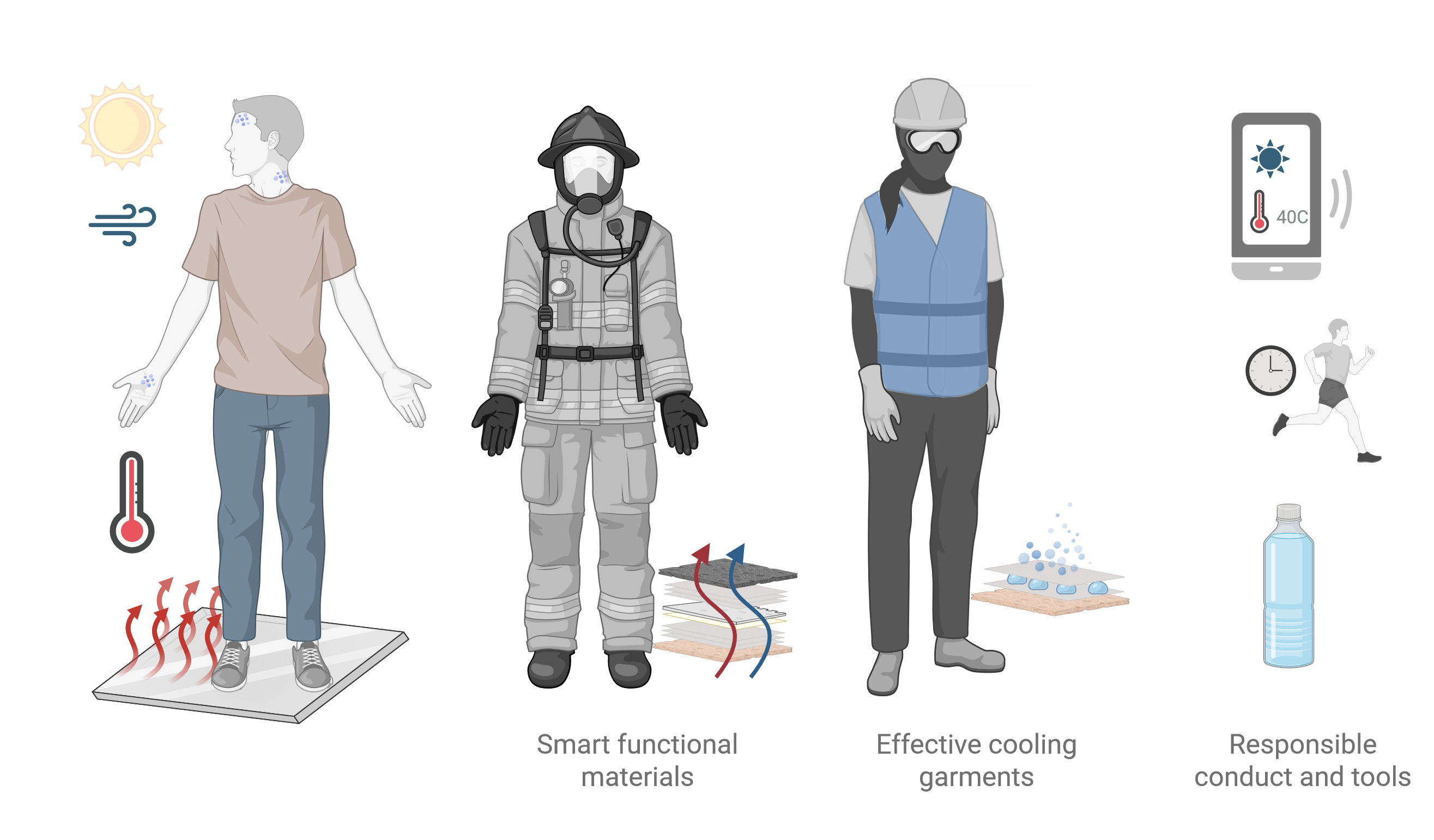Materials- and software-based applications to reduce the impact of heat
We focus on optimizing clothing thermal performance through design in virtual space, supporting thermal regulation using active, textile-based systems and computer-based control algorithms, and validating optimized prototypes through laboratory tests.

Heat load can be reduced through the application of engineered materials and tools, such as personalised heat protective and cooling systems, potentially combined with early warning solutions based on digital twins.
Specifically,
- Smart clothing systems, including adaptable thermal insulation or garments with active cooling, help to mitigate the impact of heat exposure.
- Heat protective clothing systems, including variable insulation, high spectral reflection and solutions with increased efficiency of evaporation of sweat
- cooling systems; active (fans, convection) or passive (evaporation) solutions
- Textile-integrated sensors (such as Heat flux, temperature, and pressure) for continuous monitoring of the wearer's thermal condition.
- Digital Twins and designs in virtual space which can be used to visualize hazardous conditions and allow dealing with the threat on a personalized level.
We aim to investigate the effectiveness of such heat-protective and cooling systems by exploring their impact on comfort, health and performance. For that we develop sensors and smart materials to support the active management of extreme climate conditions.
Contact
